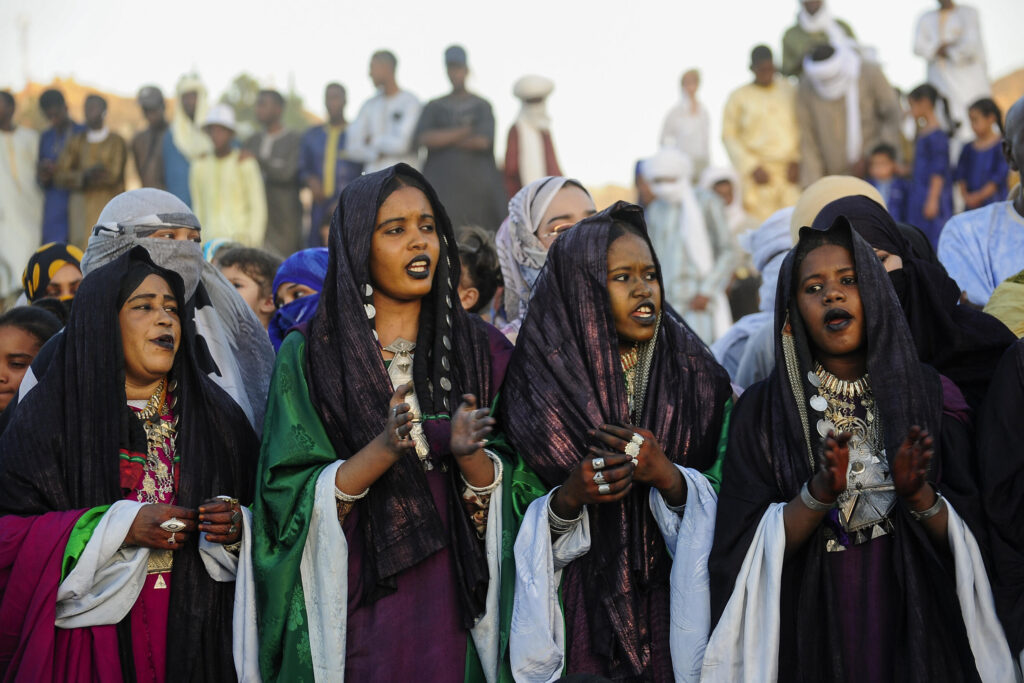
Amidst a riot of vibrant colors, music, and dance, thousands of Tuareg people have gathered at the Sebeiba festival, an event that signifies the resolution of an age-old tribal conflict.
Once a year, this festival transforms an oasis town deep in the Algerian Sahara into a lively and joyous celebration.
The Tuareg, a semi-nomadic people of Berber descent, practice Islam and inhabit a traditional desert homeland that spans across regions of Algeria, Libya, Niger, Mali, and Burkina Faso.
The ancient Sebeiba festival, taking place in Djanet, approximately 1,500 kilometers (900 miles) southeast of Algiers, has a history dating back over 3,000 years. This revered festival aligns with the Shiite Muslim Ashura commemoration.
Throughout the 10-day celebration, male dancers, clad as valiant warriors and brandishing swords, showcase their artistry to the melodious singing and rhythmic drumbeats of women adorned with sparkling jewelry and adorned with henna tattoos.
The Sebeiba festival commemorates a historic event that occurred three millennia ago, when two Tuareg tribes, El Mihane and Zelouaz, reached a momentous resolution, putting an end to their longstanding war.
According to oral tradition, the resolution to their conflict came about when both tribes learned of the death of the Egyptian pharaoh, who, similar to the biblical story, drowned in the Red Sea while pursuing Moses and the fleeing Israelites.
“Our ancestors kept the date of the day the pharaoh drowned in the sea and celebrated the death of the pharaoh,” said local elder Elias Ali, 73.
In the town of Djanet, home to around 15,000 people, the locals were diligently making preparations long before the festival commenced.
In 2014, UNESCO recognized the Sebeiba ritual and ceremonies by adding them to its prestigious List of the Intangible Cultural Heritage of Humanity.
According to the UNESCO listing, Sebeiba holds significant cultural importance as “an important marker of cultural identity for Tuareg people residing in the Algerian Sahara.”
